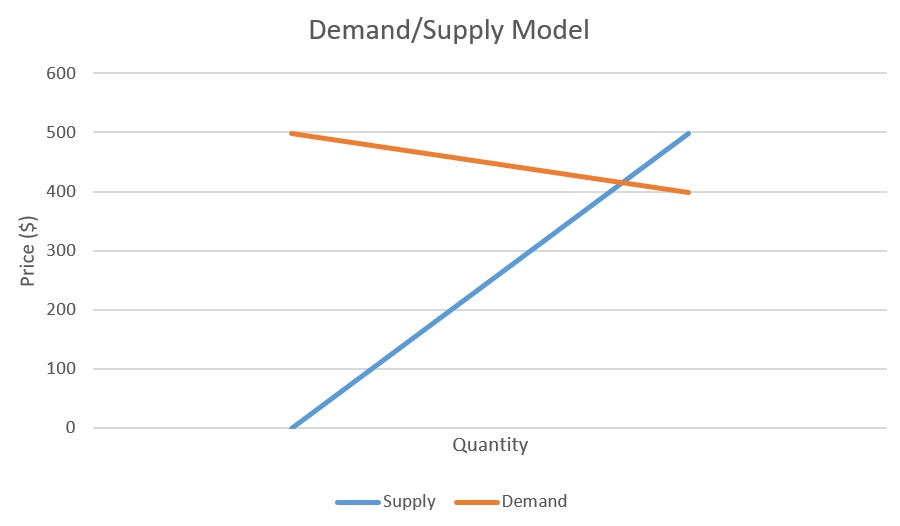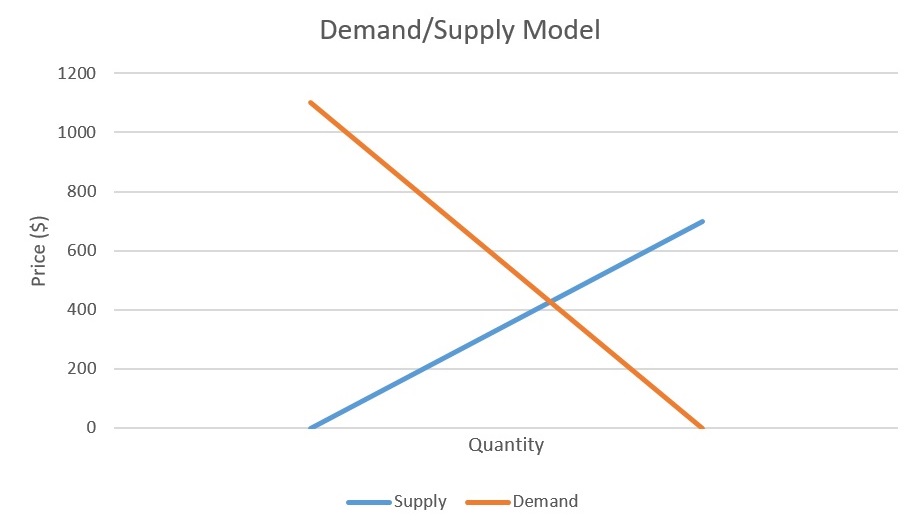The article under focus is “What Can the Playstation 5 Teach Us About Economics?”. It was written by William Chon on November 12, 2020. The author explores the case of a sudden rise in price due to the high demand for the product. The product itself is a home video console by Sony, which was released in November last year. It was a highly anticipated product among gamers and console enthusiasts.
The official price for Playstation 5 varied between 399 dollars and 499 dollars, depending on the version. Sony produced as many PS5 units as it possibly could. All of them were bought out within minutes after release. Subsequently, the supply curve moved straight down to 0. At the day of the launch, the equilibrium price was somewhere around $400 (Image 1).

By failing to produce a sufficient number of products, Sony inadvertently created the secondhand market. Many resellers succeeded in buying the consoles, while they had cost no more than $500. Now, they can earn additional $500 per unit. As a consequence, nearly two weeks later, the price increased dramatically, ranging from $999 to $1100. Because of this, the demand curve moved further downwards, as many customers could not afford paying more than $500 for PS5. The supply curve stays the same because no new PS5 consoles were produced during that period. As a result, the new equilibrium decreased to around $400 (Image 2).

Altogether, it is evident that inability of the producer to meet the demand leads to the creation of the second-hand market. Naturally, it will be overpriced because the official product will not have been manufactured by that point. As a result, both the producer and the customers lose because the resellers are the only ones with the products available for sale. In Sony’s case, the equilibrium dropped from $500 to 400$.
Work Cited
Chon, William. ” What Can the Playstation 5 Teach Us About Economics?.” Medium. 2020. Web.